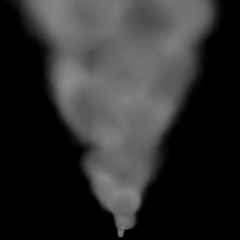
|
| Quick Nav Bar | ||||||||
|---|---|---|---|---|---|---|---|---|
| << Previous | Contents |
Selection |
Op Index |
Parent | User Notes |
Index |
Glossary |
Next >> |

|
Particle Definition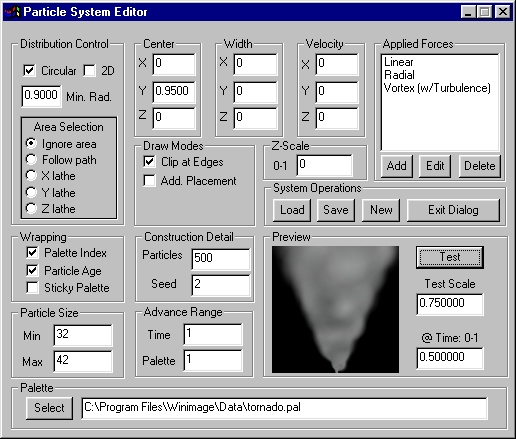 |
| To create the vortex, we used 500 very large particles (32 to 42.) We use a time advance of 1.0 to distribute their lifespans evenly across the lifespan of the system, and started the thing near the bottom of the image using a Center of .95 on Y. It's a 3D distribution with the particles forced out into the ring wall of the vortex, just as a tornado or waterspout would form. Particle palette colors also are spread out along the length of the palette so we have completely varied shades for them. |
Force 1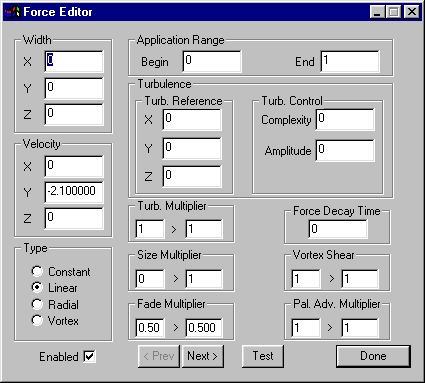 |
| This force makes the particles rise, and it also holds them at 50% transparency. Note that this is the only way to get partially transparent particles - via a force modifier. Otherwise, they're basically opaque, either additive or matte. |
Force 2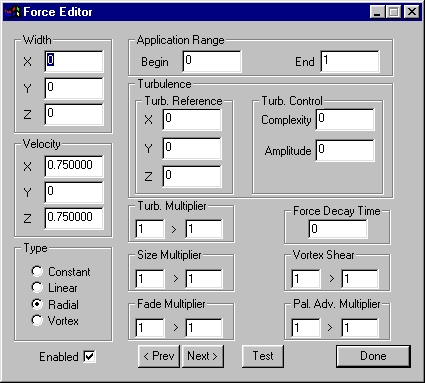 |
| This force causes the vortex to expand radially at it rises from the base of the image. |
Force 3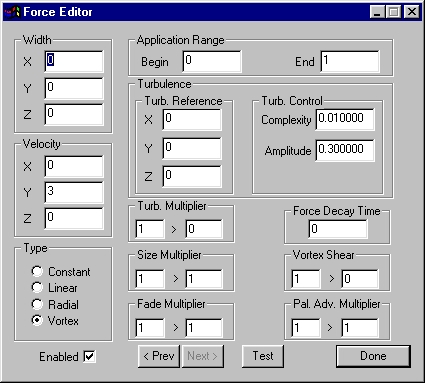 |
| This force is what causes the vortex to rotate. It also applies some turbulence, because we expect a vortex of any type to wander and twist to some degree. Note: Experimenting with the turbulence really changes the character of the vortex. |
Palette |
| The palette varies from grey towards black. That's because in a wind vortex (tornado, hurricane, dust devil) the opacity and reflectivity varies by the amount and character of the material bring carried in the ring wall; this is being simulated by large differences in the brightness of the particles. |
| Quick Nav Bar | ||||||||
|---|---|---|---|---|---|---|---|---|
| << Previous | Contents |
Selection |
Op Index |
Parent | User Notes |
Index |
Glossary |
Next >> |
| WinImages F/x Manual Version 7, Revision 5, Level B |